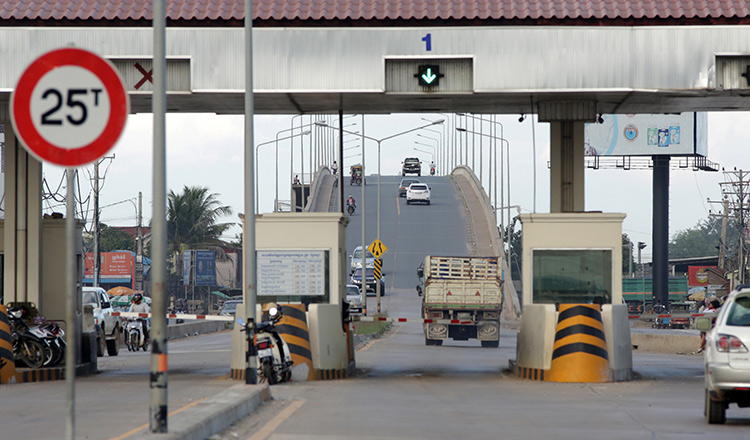Cambodia: Public debt ‘stays within safe limits’
In the last 24 years, Cambodia has made debt service payments of about $1.14 billion to development partners, while last year alone it repaid about $210 million, according to the Cambodia Public Debt Statistical Bulletin of the Ministry of Economy and Finance released last week.
The bulletin said the government last year signed concessional loan agreements with development partners in total of $977 million and special drawing rights (SDR) of $685 million.
Concessional loans from bilateral development partners amounted to $804 million while the figure from multilateral development partners was $173 million.
From 1993 to the end of 2017, Cambodia signed concessional loan agreements with development partners to the value of $9.685 billion, according to the bulletin.
It said the government borrowed $6.377 billion from countries on a bilateral basis. Of this, $4.05 billion came from China, $1.235 billion from Japan, and $145 million from France.
Other lenders were India ($75.2 million), South Korea ($720 million), Malaysia ($8.66 million), Thailand ($95.48 million) and Vietnam ($44.56 million).
From multilateral development partners, Cambodia borrowed in total about $3.307 billion.
The Asian Development Bank provided $2.119 billion, the World Bank $968.35 million, the International Fund for Agriculture Development $138.46 million, Nordic Development Fund $12 million and the OPEC Fund for International Development $69.80 million.
In 2017, the government disbursed about $721.87 million from development partners of which 77.5 percent or $559.43 million was from bilateral development partners and 22.5 percent or $162.44 million was from multilateral development partners.
From 1993 to the end of 2017, the government disbursed about $6.77 billion from development partners, according to the bulletin.
According to the bulletin, the purpose of the borrowing is to finance public investment projects in priority sectors that support long-term sustainable economic growth and increase economic productivities and production.
It said the infrastructure sector accounts covered 87.80 percent of the total loans while 12.20 percent covered other priority sectors.
Economy and finance secretary of state Vongsey Visoth said in January during a forum on the national budget for this year that the government planned to reduce its foreign debt by raising capital by issuing bonds,
“Increasing local borrowing instead of foreign borrowing will improve the country’s trade balance and current account,” Mr Visoth said.
It would also help the riel’s exchange rate to remain stable.
“Cambodia’s is preparing to adopt a new policy. We will reduce foreign borrowing while strengthening local borrowing,” he said.
He said decreasing foreign debt would help balance the expenditure budget, improving the country’s current account. Meanwhile, issuing bonds would complement the rise in revenue from tax collection, which had increased significantly in the last few years.
“We are also developing the local bond market which will be online by 2019,” he said, adding that the government planned to issue bonds in the near future, and was preparing the legal groundwork and infrastructure that would allow this to happen.
“Borrowing locally entails lower levels of risk than borrowing from abroad,” he said.
“When we borrow from abroad, we need to pay it back, which affects the current account and the balance of payments. When we borrow domestically, the money stays in the country.”
He noted, however, that Cambodia’s current debt-to-GDP ratio was 32 or 33 percent, which was a healthy level of indebtedness, and should not preclude the country from continued borrowing.
Public expenditure this year will amount to $6.4 billion, 18.75 percent of GDP, as indicated in the national budget for 2018. Government income is projected to reach $4.6 billion.
Chan Sophal, director of the Centre for Policy Studies, said the government’s new strategy was sound and would help increase public revenue, but added that the country could continue to borrow from abroad without putting the economy at risk.
“To ensure the efficiency of loans, we need to keep a closer eye on the projects that are being financed and make sure they are built according to plan and with the necessary quality standards,” he said.
He said also that Cambodia was in a good position to increase its foreign debt without this posing a risk to the economy, adding that the country should continue to borrow from abroad to finance the construction of public infrastructure.
“We have been quite cautious with our borrowing,” he said. “Why don’t we just borrow a lot to help enrich the nation quickly? We don’t do this because we need space in case a crisis happens.”
Source: http://www.khmertimeskh.com/50116188/public-debt-stays-within-safe-limits/


 English
English




